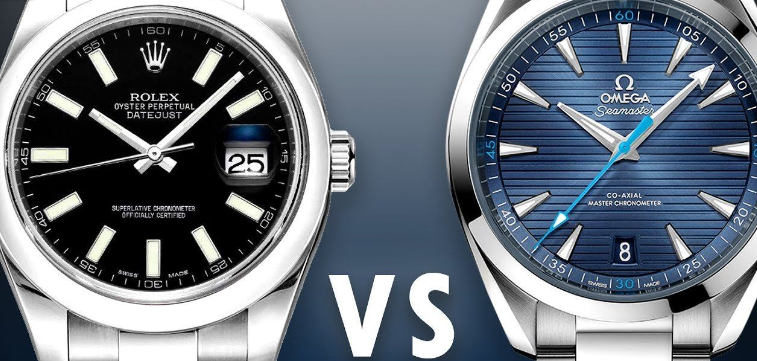The perpetual debate surrounding Rolex and Omega often leads to one overarching question: Is Rolex truly superior, or is it just the result of brilliant marketing? This question echoes through watch enthusiast circles, with inquiries such as “Why is Rolex better than Omega?” and the less common but intriguing, “Is Omega better than Rolex?” Let’s dissect the comparison between Rolex and Omega, exploring what has contributed to the perception that Rolex reigns supreme.
The Rolex Perspective: Crafting a Legacy

Rolex, founded officially in 1920, achieved remarkable milestones early on. In 1926, a mere six years after its inception, Rolex introduced the groundbreaking Oyster case with a threaded crown, pioneering a proprietary waterproofing system. Beyond technological feats, Rolex’s genius move was establishing a product line and steadfastly adhering to it. Unlike the less-known Cellini series, which didn’t gain traction, Rolex maintained consistency, creating a catalog that became synonymous with reliability.
In the eyes of Rolex, consistency is not a flaw but a deliberate strategy. While some criticize the brand for being risk-averse and resistant to change, Rolex views this approach as effective communication with its consumer base. The familiar Rolex catalog fosters a clear image and understanding among consumers, cultivating brand loyalty and contributing to Rolex’s unrivaled brand equity.
Furthermore, Rolex’s independence, being controlled by a family trust, sets it apart from Omega, which is subject to Swatch Group’s influence.
The Omega Perspective: Navigating Complexity

Omega, officially founded in 1848, predates Rolex on paper. However, Omega’s journey has been marked by a proliferation of watches, obscure reference numbers, and a departure from a cohesive catalog strategy. Unlike Rolex’s focused approach, Omega’s extensive variations and movements have led to missed opportunities for recognition.
Omega, under the control of Swatch Group, faces limitations in movement choices and strategic decisions. The restriction even extends to events like Baselworld, where Omega’s absence hampers its visibility and brand exposure.
A peculiar aspect of Omega’s brand positioning is its seeming pursuit of Rolex. James Bond, a pop culture icon, originally associated with Rolex in books and early movies, later transitioned to Omega Seamaster in newer films. This shift, intentional or not, creates a perception that Omega is catching up rather than leading.
Omega’s strengths, including arguably better chronographs than Rolex, are overshadowed by the brand’s tendency to diversify excessively, diluting its identity.
In Conclusion: Playing Catch-Up
While Omega boasts a longer history, its divergence from a clear catalog strategy and reliance on Swatch Group’s decisions have impacted its brand equity. Rolex’s deliberate consistency, effective communication, and independence have elevated its status, making it the default choice for many watch enthusiasts.
In the Rolex vs. Omega narrative, Rolex emerges as a brand with a carefully curated identity, while Omega appears to be navigating a complex legacy with the challenge of catching up.
